Tim Ashley does it again. I’m pleased that one of the best camera gear hands-on reviewers (who’s a multi-system user!) reviews Leica’s latest digital M baby — and kindly allows THEME to republish it. If you know Tim, you know that you’re about to read some of the most balanced, thought-out, objective gear review written on the Net, in this case about the Leica M Typ 240. We’re not talking blind gear adulation. Enthusiasm, wit (stalwart “rangies” anyone?), the mastery of the craft and search for a straightforward user experience are all part of Tim’s approach. BTW, Tim has all the Leica glass others can dream of. It sat there idly until the arrival of the M. One of Tim’s more controversial observations is that the M 240’s rangefinder mechanism yields substantially better yields than the predecessors do. Something changed in there? But beware, maybe the title’s misleading. Tim’s still not decided if he’ll keep the M:

As resolution and ISO performance in 35mm full-frame cameras ratchets mercilessly upwards, one of the profound problems facing the serious photographer is that of sourcing lenses that are well enough designed (let alone well enough made) to keep up with the sensors. In fact, with the exception of the Zeiss 35mm F2 lens on the Sony RX1, I have failed to discover any lens under 50mm that I find fully satisfying on a 25MP or higher camera. So having a cupboard full of unused Leica M glass represented an unbearable temptation: I simply had to get an M 240 because, after a year of D800 shooting, I badly needed my “fix” of edge-to-edge sharpness from wide-angled lenses that were not only fast, but had plentiful character.
I had kept all my M lenses for the very good reason that I hoped one day to see Leica ditching CCD sensors in favour of CMOS. Hell, even Phase One looks like it might one day go that way. CCD simply can’t keep up with CMOS when it comes to higher ISO performance and dynamic range — being two sides of the same coin. There are those who disagree of course, but I believe them to be wrong. I also believe that the “Leica Look” is mostly down to lenses and very little to do with the type of sensor used.

Despite a long and productive history of M shooting (from film Ms through M8 and M9 variants) I largely stopped using the system a year or two back, and sold my last body several months ago. Frankly, Leica had fallen too far “behind the pack” and very significantly better image quality was available elsewhere. Of course this does not mean that M8 and M9 shooters can’t make world-class imagery. Far from it. And personally, many of my very best photographs have been made with M cameras. But the limited dynamic range and poor ISO performance was increasingly irritating to me, as was the lack of even rudimentary weather sealing. So I stowed the lenses and moved on.
I should add here one final disgruntlement I had with CCD: no live view, whether via an EVF or the rear LCD. I don’t give a damn for video and may never use it on the M, but a permanent problem for me was the tendency of M bodies and M lenses to drift in and out of agreement with each other. The rangefinder mechanism, with its “near and far” adjustments and its sensitivity to a variety of factors that could send it out of perfect alignment, was probably the single main reason I gave up on the M9: I simply got fed up with the tedious task of keeping a stable of lenses in agreement with a prima donna body. There were times when I would have killed for an EVF, just so I could track down these issues more forensically, and so I could still use the system until there was a convenient time to get the whole shebang re-jigged at Solms.
One more advantage of an EVF to the erstwhile RF user: exact composition. It’s not just about framing: quite often I want to line up scenic elements quite exactly and with a rangefinder, parallax makes that very difficult and requires iteration between shoot and review. That’s possible for static subjects, but not for those involving subjects that have life. To illustrate what I mean, here’s a shot that required careful lining up — composed with the EVF and not perfect, but close enough given that I was standing in traffic…

But one warning: the EVF and LCD show a little less field of view than the file you end up with. This might be due to a global assumption that lens corrections will later be made, and I need to test this more.
Fast forward to the present. Nearly everything I wanted is now on offer. The time has come to test the water.
I say “nearly everything” because the fly in the ointment, for me, is the fact that Leica have not used a Sony sensor. This factor needs tackling head-on, before I get into the review proper. I believe that Sony make the best full-frame sensors currently available: their color depth, dynamic range and ISO performance are state of the art. The problem for Leica is that those lovely M lenses have a legacy sting in their tail: the rear element is very close to the sensor, which means that sensels at the edge of the array receive their light at a very sharp angle compared to those on an SLR.
The result of this is that very particular microlenses are needed on the sensor in order to avoid serious problems with color shifts across the frame, especially with wide angled lenses. Uncorrected (and in fact the problem is dealt with by a mixture of hardware in the form of microlenses and software in the form of image processing at the firmware level) this leads to unattractive shifts in color across the frame, typically involving green/cyan and red/purple “taints” which can make skies in particular look distinctly odd.
The problem is that the microlens arrays needed to mitigate the problem are very bespoke: they have to be exactly designed and manufactured for a particular series of distances and angles. It’s not that Sony can’t do it — they have already, notably on the RX1, though it is not entirely successful on that camera — rather it seems that Leica wanted a slightly different approach to the strongly tilted peripheral microlenses that were used on the M9 and which gave them quite a processing job to do in order to avoid color shifts. So they chose CMOSIS, who were able to offer a shallower light well over each photodiode and a taller, more high-domed microlens which reduces both crosstalk and light loss due to reflection at the peripheries of the sensor. The idea behind this is to eliminate color shifts, though some color vignetting remains.
I have shot samples using specialist equipment that shows this color vignetting on the 18mm F3.8 lens in the form of red edges at all apertures up to and including F5.6. I include below for reference the F4 file. The effect is gone by F8. I expect Leica to carry on improving the firmware treatment of this issue and it therefore does not greatly concern me at this point. However over the next few weeks I will be reviewing the performance of the M 240 with a variety of lenses and I will test for this problem with 28mm and 35mm lenses, both of which may be affected. I will present all those results as I cover each lens in turn.
Overall, CMOSIS have done a very good, but not a perfect, job.
If you (like me) believe that DxO sensor scores are significantly meaningful you will agree with what I have written about this elsewhere:
The M 240 is the 11th highest ranking sensor they have ever tested. But if you ex-out the medium format cameras (because you’re a 35mm kind of a guy/gal) then it is 8th. Now, exclude the egregiously high MP D800 and E, and the lower MP D4, because you are looking for a 25MP camera, and you climb to 5th. Now look at the four cameras above you: three of them have, in effect, the same Sony 24.3MP sensor.
In other words Leica has managed, on its first outing with a CMOS sensor and using a manufacturer which is not widely known, and having to work around the very specific microlens requirements of the M mount, come up with the third best sensor ever tested, in its MP class. And to beat every Canon camera ever tested. Now that is pretty damned good.
I will cover the practical implications of this sensor choice in more detail later in this piece, but for now there is one further thing to add: the great advantage of the M 240 in DxO testing is that its dynamic range at lower ISOs is great, and almost in the same league as the Sony sensors in the RX1 and D800/800 class. It actually beats the Canon 1DX and 5D Mark III comfortably. However, looking at the graphs that map DR against ISO show that the Leica takes a relative dip somewhere around ISO 640 and from 800 onwards, the story is less rosy. So as has always been the case, the current generation digital M is still relatively disadvantaged at higher ISO and not just in terms of SN ratios — it gives up its DR performance by more than its peer group as ISOs rise.
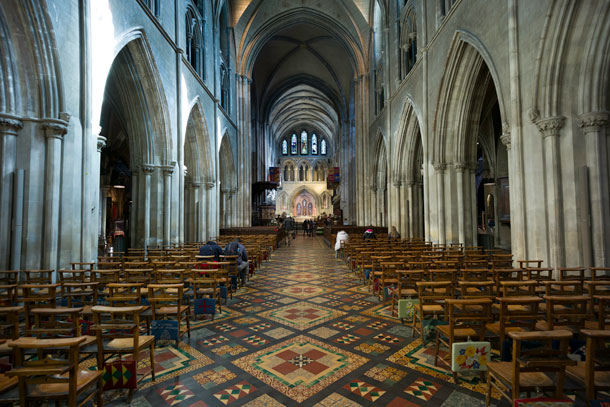
I want to say a brief word about resolution too. There are those who feel that over a certain MP count (as low as six for some, 12 or 18 for others) little significant advantage is gained by incremental resolution. I disagree. I think we are entering an era of “oversampling” where we no longer need to compare images at a pixel level but rather at comparable print or screen sizes. Indeed, this is what DxO already does by normalising its measurements to a notional 8mp. But higher pixel counts do have advantages: other things being equal, they let you print larger. Smaller pixels, more densely packed, help sensors without AA filters to avoid moiré more effectively (in fact I can confirm that moiré, though sometimes present, is less of an issue than it was on the M9).
Downsampling high resolution images with good lenses to the same resolution as lower resolution sensors shot with the same lens usually results in files with more visible detail. But notwithstanding all the above, some people have claimed that the M 240 has no actual resolution advantage over the M9. I suggest that those people read Roger Cicala’s excellent piece here, in which he clearly shows this not to be the case (at least with the 50 Lux attached), especially at the corners.
And now onto my experience of the camera so far:
(Please note: I only shoot RAW and everything I show and tell refers to RAW files, even when the examples given are JPEGs developed from RAW. However it is not my intention in this piece to give a zillion crops showing detail and noise comparisons with other systems — I will do some of that in a later piece.)
In short, the files are lovely but they are not as good as the other cameras (D800E and RX1) I am currently using. There is evidently a bit less dynamic range and this manifests in more files under normal shooting conditions where there are both red and black “blinkies” on the LCD and in the RAW developer. There is also a notably poorer ISO performance at anything over 800 and there is, more worryingly, a tendency for a subliminal tartan banding pattern in shadow areas, which becomes supraliminal when you push the files around. I have also found such banding in normally developed RAW files at an ISO of as low as 2,000, where the shadows and exposure have not been altered in the RAW developer.
Does this matter? To me, somewhat. I shoot a lot of landscapes and this is a discipline that requires as much DR as you can throw at it and as much ability to “deal with” shadow areas in post as possible. But honestly, if I were to exercise the care with exposure that I have become accustomed to being lax about with a D800E or RX1, under most of the conditions in which I habitually shoot this would not be an issue. I have shot several comparative files on a D800E and M240 in daylight and the shadow areas of both have been equally flexible, for all practical purposes, as long as I Expose to the Right on the M at higher ISO. At lower ISO, it is less important.
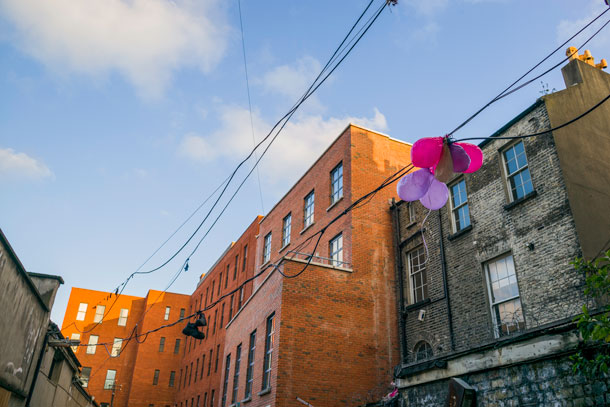
However, when shooting in darker conditions, this can become more of an issue. Here is a file I shot the other day at ISO 2,000. Clicking on it will give a full sized JPEG developed from RAW in Lightroom with sharpening at my usual 60.0.7/70/20 and with NR (but not color NR) turned off:
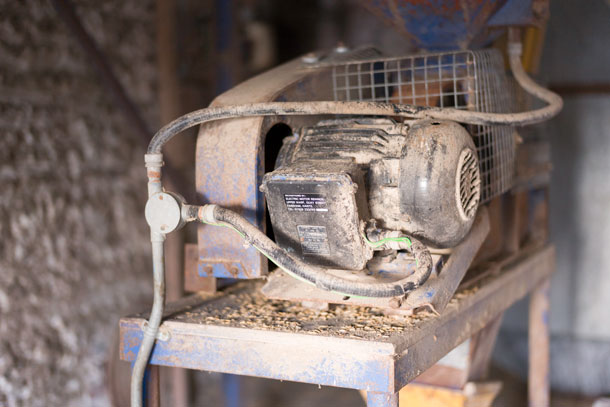
There are, of course, a hundred possible caveats to the value of this example: Lightroom does not yet have a bespoke profile, my sharpening is a matter of choice with which others may disagree, NR could have been deployed (though color NR was, at a value of 25/50 in LR) — in fact any number of steps could be taken to mitigate this. But bottom line, even as low as 2,000, there is a problem that needs dealing with which is simply not an issue with some other current generation sensors.
Consequently, I tend to try quite hard to avoid ISO values over 2,000. If really needed I will go to 3,200; but as for the “push” 6,400? Well, unless you find Howard Hughes snogging Greta Garbo under your porch lamp, forget it. They were right to provide it as an emergency setting and right to call it “Push” but by now, we all know that some competing systems give perfectly useable files at higher ISOs — and that fast lenses and gentle shutters are not always enough to make up the difference.
I must add here that I am particularly sensitive to banding and tartan: I can often sense banding at smaller degrees of zoom before I can see it having zoomed in. Other people’s tastes and perceptions will vary and in any event it is certainly the case that large, semi-shadowed areas with little detail will show up the problem — whereas when there is some detail for the sensor to “get its teeth into,” it will be far better masked. In fact I could make a shot at 3,200 that would look great and another that would look pretty poor. So please take my opinion as a generality from which your own might diverge.
There is another problem: boosting shadow areas can produce a starscape of bright single pixels, rather like “hot” or “stuck” pixels. These are quite quickly dispatched in Capture one V 7.1.1 using the Single Pixel NR feature, though I do not otherwise like that program for M 240 files — it seems to give a slightly oversharpened and coarser look though the colors are quite good.
Does any of this matter? Not to a deal-killing extent, by any means. Good technique will make up for most of it. And the simple fact is that a 25MP shot taken with a really good lens shows more resolution than a 36mp shot taken with a lens that produces a few pixel widths of blur in certain parts of the frame. In other words, if the promise of Leica M glass is fulfilled on the M 240, then there are sufficient IQ advantages to the M system to outweigh these minor issues.
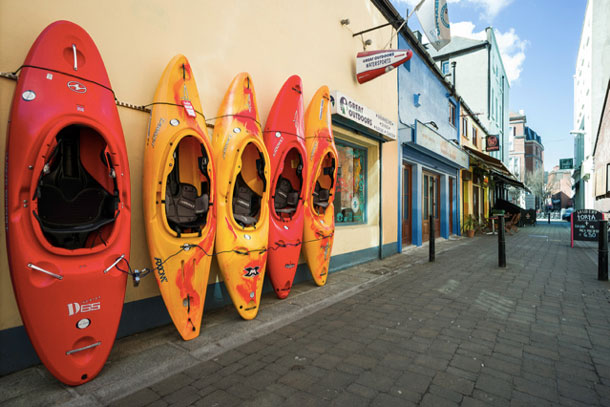
This brings me on to the next point: the Nikon D800 has, for the past year, been showing up the existing cadre of Nikon mount lenses, from all manufacturers. Many of the existing lenses just can’t keep up with the sensor. So there is potential for the M to score big points here — provided that the new, higher resolution sensor doesn’t start to embarrass the previously venerable lenses. This is a separate and larger topic, which I will cover in future posts devoted to looking at the performance of the M 240 with certain classic lenses. After all, you are buying a system, not just a sensor and some ergonomic and haptic features. Talking of which…
Usability and Design
No one but no one else makes cameras that feel as good as this. As an object, it is beautifully crafted, as befits its heritage and price. Just holding its makes you feel creatively inspired. I like the little sticky outy thumb grip thing, too, and the new font and menu system. It all feels just right. But I do sometimes wonder if the desire to remain loyal to the Leica gestalt means that decisions are made for that reason, rather than for the logic of best handling because as a functional camera, it does have some issues. For example, it is simply daft and annoying that the baseplate has to be removed in order to get at the battery and card because this means detaching one part (said baseplate) entirely and putting it down separately. It also means that getting at the card means removing any tripod plate you have attached. Admittedly this is most annoying when running tests, which often require a tripod, rather than in real world use — but I do know a lot of photographers including myself who do sometimes use a tripod with their M in the real world.
Another example: the means of achieving exposure compensation is via a combined press of a small, stiff, recessed and poorly placed button and a simultaneous rotation of the rear control wheel. Sometimes it works, sometimes you miss. Practice might eventually make perfect but crikey, really, honestly, we’re adults here: at least give us the option to control exposure compensation with a simple twist of the control wheel, which at this point in its life cycle as a wheel has no other function. Sure I might jog it accidentally. But if I do, I will man up and take the blame. Just give me the choice, please.
The rangefinder itself seems to have been redesigned and, with my lenses at least, is a great deal more accurate and reliable than on my previous M bodies. So much so, in fact, that for now at least (time will tell if it “drifts” as the older design was liable to do) I prefer to use the rangefinder rather than the EVF for critical focus. Really. I ran a test with the camera on a tripod and a target at intermediate distance and with each of my six lenses (including an F1 Noctilux) and wide open, I focussed three frames with the RF and three with the EVF and it got every single shot perfect with the RF, whereas the EVF scored two shots out of 18 noticeably “off.” Kudos to the rangefinder.
Another interesting thing about the rangefinder, and this might just be luck rather than RF judgement, but when shooting my normal “harborside” series of tests shots, I ran several focus bracketed series on the 35 Lux FLE (against the Sony RX1 but that is another story for another day) and with the particular set that I focussed once, wide open with the rangefinder and then shot at every full stop from there without changing focus, I got better edges than in the set where I used the EVF to re-focus after every change of aperture. To me this means that the RF “knows” how to focus this lens so as not to be fooled by its slight residual focus shift — and in a very precise manner; whereas the EVF merely chooses the best focus at each aperture on centre, thereby shifting the field of focus as the lens exhibits slight focus shift. This makes no notable diffence to the sharpness on centre but it does have a bad effect on the edges, probably due to field curvature. I will test more for this with other lenses and report back.
One further comment on the RF: if you wear spectacles, you can’t really use it for framing accurately with lenses wider than 50mm because your eye cannot get close enough to the window to allow you to see the whole field of view. In fact, you have to peer around the edges with a 35mm lens even to see the frame lines — and with a a 28mm lens or wider, you are flying blind. I can’t see that this could be changed other than by going for a lower X factor in the finder, which would create further problems elsewhere. But it IS a problem. Sean Reid and others have been great proponents of the RF system because, unlike an SLR finder, it lets you see “outside the frame” and this can help with anticipating and framing the subject. Fine, with 50mm and longer lenses: but if you wear specs it comes at the cost of often not being able to fully see inside the frame.

Hard to Frame through the Rangefinder with Spectacles On! 28mm Cron at F5.6, 1/750th. ISO200
So: the RF is mostly good but how about the EVF? Pretty damned nice actually. Not quite as nice as the OLED on the RX1 for sure, but no slouch. However, there are some quite “first generation” touches to it that annoy. Firstly, you can only focus on the central point. There’s simply no option to move the focus zone around the scene. And this does matter, because lenses with field curvature can cause subjects placed on the thirds to fall out of the zone of focus if you use a “focus and recompose” method.
Next, maddeningly, you have to manually press a button on the EVF itself to switch between EVF and regular live view LCD usage. This quickly becomes annoying, in particular for those of us who instinctively chimp on the LCD and have yet to acquire the muscle memory to switch constantly backwards and forwards with the button. I spend a lot of time staring at a blank LCD while the EVF merrily displays the shot I just took. A firmware update should allow an option to “always display review on LCD.”
One mistake/oversight/restriction which is IMHO unforgivable is that, having gradually forced myself to use the EVF for image review, I discover that the over-/underexposure “blinkie” warnings do not display after taking the shot. If you return to shooting mode, then press Play in order to once more see the image review, there they are: but I made quite a few poorly exposed shots because I assumed that those warnings would display automatically, as they do on the LCD if you are in the correct Info mode. WTF?
A further problem is that the focus peaking “shimmer” is too often very hard to see. Others have noted the same. Again, this might be addressed in a firmware update. And if you wear spectacles, you simply can’t look through the RF properly if the EVF is attached because the EVF physically gets in the way of the edges of your spectacle frame. I should add here that I am using the Olympus version, though I understand it to be identical other than cosmetically.
The LCD
The LCD suffers the same problem as the EVF when it comes to the inability to move the focus point around the screen. I’m sure there’s a good reason why they couldn’t do this but really, it is a waste of the potential of live view. Enough said. Otherwise the LCD is pretty nice, though in review mode when zoomed in, it tends to make images look slightly blurry even when they are in fact pin sharp. But for live view focussing in fully zoomed mode, it kicks the arse off a D800 and takes no prisoners. Again, enough said.
Exposure
Exposure methods have been updated in this brave new CMOS world of metering directly off the sensor. In addition to “Classic” (for which read “using a diode to measure light bounced off a white stripe painted on the shutter blades”) there is now “Advanced,” which means taking direct sensor readouts of the actual scene, in real time, and running them through an algorithm to determine optimal exposure. The latter will usually, but not always, give a more well-judged exposure but this improvement comes at a cost: to read exposure directly of the sensor the shutter has to be open. So: power on, brief pause, shutter opens (“did I accidentally take a shot?”), metering starts, shutter button fully pressed, shutter closes to end metering, shutter opens and closes again to make exposure, shutter reopens to continue metering. Basically, it’s like using a Fuji X100, where various things are opening and closing all the time like bedroom doors in a French farce and you quickly lose track of where you are. Or at least I do. Familiarity might eventually ameliorate contempt but for now gimme “classic” when I’m in a hurry.
I use exposure compensation all the time in any event, so if I am going to compensate a slow and clunky system, I might as well compensate a really fast, quiet and deft one. It’s great that the option is there, really it is, but I personally will not be using it much and actually the wise choice is to set the camera to Classic because in normal (non live view) RF shooting, the camera will then meter that way but in either EVF or LCD live view, the shutter has to cycle as described above in any event and so it will always use Advanced. The only advantage to using Advanced all the time is to achieve consistency of exposure behavior and for people who learn a system to the point of instinct, that might matter.
Within the Advanced system are options for Spot, Centre Weighted and Multi Point, so be sure to make your choice here because as I say above, in any form of live view (LCD, EVF) Advanced mode is always active. Confusingly, the “Advanced/Classic” choice is made from the Menu button, but ‘Spot/Center/Multi” is selected from the Set button. Actually there’s a logic to that but it sure as hell is counterintuitive.

The on-camera “blinky” exposure warnings have a bit less of a tendency than some other systems to panic too early. I have set mine to blink at values of 0 and 253, which seems to work for me and which makes them behave in a manner more like that shown in Lightroom. Setting them to 0 and 255 on the other hand seems to make them the highlight warning impossible to trigger, even when areas of the frame are clearly “blown.”
Auto ISO System
While we’re talking exposure, a word on the functioning of the Auto ISO System: it needs to be changed. There’s a bug in it (FW 1.1.0.2) and there’s a “low hanging fruit” firmware upgrade that could make it more useful: according to the example given in the manual, if you set the Auto ISO parameter to 1/focal length, then, provided that you are not up against the maximum ISO ceiling you have specified, the system will increase ISO rather than allow the shutter speed to drop lower than 1/focal length. The example given is with a 50mm lens, not allowing the shutter to go slower than 1/60th. In use, however, this is not the case: with a 50mm lens the camera allows 1/45th and with a 35mm lens it allows 1/30th. These are certainly the nearest conventional shutter speeds to the reciprocals in question but they are clearly below that reciprocal.
For some shooters, those with extremely steady hands, this will not matter but to me it does. Firstly, anything that behaves differently in practice to its behavior as described in the manual makes one feel uncertain of the integrity of the system. Secondly, we are not in Kansas anymore: this is not a 12MP or 18MP camera. At 25MP, assuming that one might want to use those extra pixels to make larger prints, camera shake is starting to become more of an issue. On the 36MP D800E for example, it is widely felt that though one might “get away with” 1/focal length sometimes, to be safe you need two or even three times that shutter speed.
Sure the Leica has no mirror and has a lighter shutter action but it really does need at least 1/focal and I have lost shots to slight shake because of its tendency to drop a little lower. I suggest that Leica fix this bug, and that in addition they allow (as does the firmware in the Nikon) the option of selecting 1/focal length, 1/twice focal length and 1/three times focal length. This will be entirely irrelevant for at least some shooters but for many of us, it will give us a higher proportion of bankable shots.
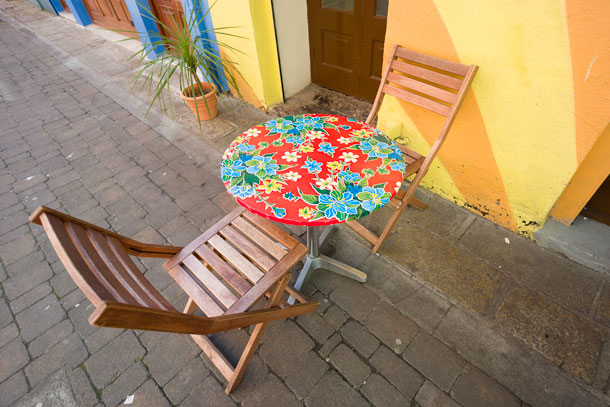
As an aside, I have been made aware that for those using zoom lenses, the Auto ISO system currently uses the shortest focal as the one from which it deduces a “1/focal length shutter speed” and then sticks to that speed even as the zoom length increases. I am not sure what Leica can do about this since the lens doesn’t “tell” the camera which focal length it is using, but it might be possible for the default value to be skewed towards the longer end of the range.
Another problem with the Auto ISO system, and I understand that this is not a bug but a user request, is that the Auto ISO function doesn’t work when you are in Manual mode. Instead, it reverts to the last used manually selected ISO, which may have been manually selected so long ago that the user has forgotten what it was.
This came as something of a surprise to me: I was expecting to find that when already in Auto ISO mode, shifting from A on the mode dial to a manually chosen shutter speed would cause the camera to select whatever ISO was necessary to get a correct exposure with the combination of aperture and shutter speed I had selected. But apparently Leica listened to the wrong people during the beta phase. The rationale of these people is that they want ISO to be fixed under these shooting conditions in order for them to use the shutter speed as a means of controlling exposure compensation. I am not sure what they think the exposure compensation function is for. But in any event, if that’s the way they roll, all they need do is switch to manual ISO rather than in effect making Auto ISO become, unpredictably and silently, Manual ISO at some legacy value that is probably no longer relevant. I hope Leica changes this.
Auto White Balance
Auto WB seems to me no better nor worse than other cameras in the peer group. You have to expect to tweak it yourself from time to time and critical use will always require use of a WhiBal card.
Color Rendition
Color rendition is a thorny issue. I don’t shoot JPEG so I won’t comment on how well that works but so far, using Lightroom, it is obviously not quite there yet though I was struck in my harbourside test shots by how close it was to the Sony RX1. I am sure that when Adobe release a full profile things will improve in the slight problem area, which seems to be the reds. Rendition in Capture One might be a touch better for now, but these things really are about some quite personal (and some might say cultural) preferences.
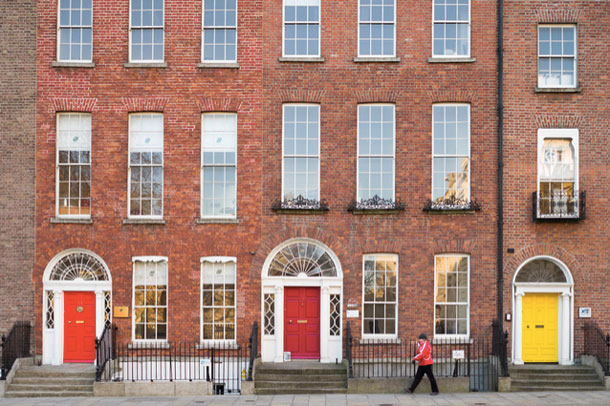
Divine or Magenta?
I will leave that up to you to decide. Here’s a shot of a camera bag, made of purest nylon in fetching shades of black. Click it for a large version in ProPhoto JPEG format:
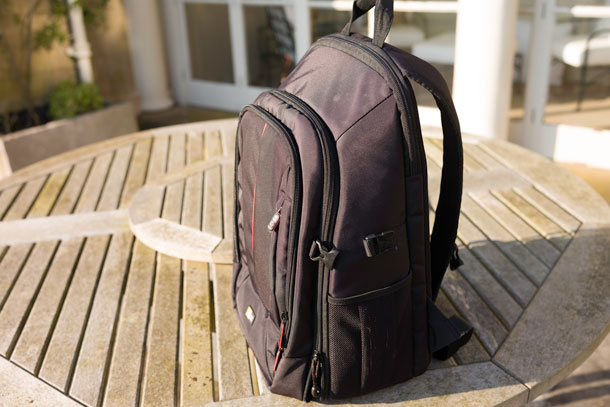
Weather Sealing
A final note: weather sealing is now provided. I think they use the phrase ‘splash proof’ and clearly you can’t retrofit this to the lenses themselves but nonetheless the move is a welcome one.
Enough blather now, it’s time for an…
Interim Conclusion (pending wider testing…)
There is so very much to like in the latest digital M. IQ that almost catches up with the best and beats a lot of the competition. Access to amazing lenses from the M range and now, via adaptors, the R range and beyond. Live view and an EVF. A new, larger and longer lived battery (though it does give the camera a bigger booty). Better high ISO performance and improved dynamic range. A noticeably better rangefinder mechanism. There is a long, long list of improvements here, and most of the niggles I have identified will likely be sorted out in firmware.
So is the new M, part evolution and part revolution as it is, a success?
The photographic world is made up of four kinds of people:
- Stalwart “Rangies” — people who just love the style and form factor of RF shooting, and unless the camera they are using is really lagging the field, they will put the RF experience and the lenses that come with it ahead of ultimate sensor IQ and system flexibility.
- People who don’t yet know if they are in category 1) above, because they haven’t tried.
- People who can swing either way, and will be swayed heavily by IQ and/or price and or any number of other factors.
- People who have tried and just know it’s not for them.
Leica is unlikely to sway many category 4 types but it should do very nicely from selling to category 1 in the short term. The M 240 is likely to please those people greatly, though some of them, sniffy about such modernities as COMOS, live view, EVFs and video, are already harrumphing their way back towards the M9.
But in the longer term, as R&D costs rise and economies of scale grow, they might need to sell more stuff, to work on category 3, so as to help create the sort of buzz that attracts the category 2 crowd.
I personally am a big “category 3” man, so I might be a good guinea pig — or perhaps a budgie in the coal mine. There are some things I like about rangefinders and some things I don’t but I can use them proficiently and have fairly good levels of experience both with them and with other systems. But I am in no way emotionally wedded to rangefinders or indeed, yet, to any particular system. I don’t love my D800E, for example, in fact it irritates the hell out of me in some ways. But it is mostly damned good at its job and, with a 24-70mm F2.8 zoom attached, it weighs just 100g more than the M 240 with 28 Cron, 35 and 50 Lux and 90mm Macro Elmar — and you don’t have to change lenses all the time. I do love my RX1 (though it too has faults) but I dislike its lack of flexibility regarding focal length. But as a discreet shooter, it certainly has the M 240 beat, being smaller, lighter and a lot quieter.
All things considered, what I think so far is, I just don’t know if I’m going to keep the M 240 or not.
It looks nice. It feels very nice. It produces very good files (not quite as good as I’d like but largely as good as I need) and I have great faith in Leica to fix those things I have mentioned above which are broken, incomplete or poorly conceived. Leica are keen as mustard, responsive, engaged, dedicated and they listen and respond. Their firmware updates are, historically, intelligent and timely.
So let’s say that all this stuff does get fixed, even down to the stuff that is merely my preference rather than a particular fault. Let’s say that I also discover (though I do have one or two doubts) that my treasured M lenses are not outstretched by their new stable mate. How would I feel then? Would I add the M 240 permanently to my armoury, possibly replacing the RX1 and even the D800E?
I think probably (but not certainly) not. I think I have found, since shooting the M 240, that I prefer the files on the RX1 and the D800E and that the Zeiss lens on the RX1 is in many ways better than the 35 Lux FLE. I will post more about that in future, when I come to some system comparisons. And yes, I do know that you can’t compare apples to oranges but hey, sometimes you have to choose a piece of fruit.
I have also rediscovered that lenses shorter than 50mm are a pain for spectacle wearers to use through the rangefinder and that, useful though the EVF is, I want it to be a switchable internal one like Fuji make. Add-on EVFs catch on things, feel carbuncular and don’t lock in place securely (if at all) and that applies equally to the RX-1.
But. But but but. Those M lenses that I have kept, my cherished babies, have such a lovely look — better on the M 240 than on any alternative. They make me seem to be a better photographer than I am, and I like that.
So that’s where me and the M 240 have a chance of making a go of it. The lenses might keep us together. And if they do, I will be secretly rather happy.
I will let you know how it goes. But one thing is for sure: the M 240 means that you can opt for a digital M because of the lenses without that also being despite the camera.
(Addendum by THEME: Well, has the rangefinder mechanism been redesigned or not? The illumination window is removed, but Leica marketing doesn’t point to any redesign. Tim tells with a strong degree of certainty that something significant has been done to the design or mechanics of the rangefinder. Or put it this way: If the previous design was problematic but still in some shipping units, says Tim, would you make the change loudly or quietly? Maybe photographers achieve a better success rate by means of a reduction of the mechanical tolerances? Leica say nothing’s changed. Guess we have to leave it at that until someone physically compares an opened upM9 to an M 240…)
+++ You might also want to read our complete, continuously updated The Leica M Review File. +++ You can order the Leica M from Amazon (black/chrome), B&H (black/chrome) or Adorama (black/chrome).


